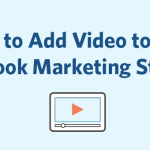
If you are a small business owner who is looking for Point-of-Sale (POS) software for your business, then you have come to the right place. With so many options, choosing a POS system that is right for your business can be tough. That’s why we have put together this four point guide to help you narrow things down.
1. Create a list of the features your business needs
Before you begin POS shopping, it is important to know exactly what you want out of your POS system. If you just start looking at options without clarifying what you need, it is easy to get overwhelmed with all of the choices out there. But, if you create a list of necessary features and keep it in front of you while you shop, you have a quick-and-easy way to begin narrowing down your options.
Here are some things to consider when putting together your feature list:
- The Basics: Make sure the system has all of the basics. This would include general payment processing, an intuitive and easy-to-use back-office and register interface, employee management tools, and tax settings.
- Industry Related: If you run a full-service restaurant, then you will need a POS system that can accept tips, manage tables, print kitchen receipts, and accept reservations/appointments. If you are in retail, then you want to be able to scan-in inventory with a barcode scanner and calculate item costs/margin/markup. Know your industry and plan your feature list accordingly.
- Business Related: Every business is unique. It is important to know what drives your business and make sure your POS system complements that instead of hindering it. If marketing is your thing, make sure the POS system does email/viral marketing or integrates with a third-party solution like Mailchimp. If your retail business is growing and new store locations are in the near future, make sure that the POS system can handle multi-store needs such as store-to-store inventory transfer. Your POS system should have the key features you need to capitalize on your strengths without having so many that you are overwhelmed or are paying for features you don’t use.
Comparison table of features and pricing for three popular POS systems.
2. Know your budget
Once you have a feature list, it is time to set your budget. Do this before you begin actively searching for your POS system. It is not worth spending hours messing with a system, only to crunch the numbers later and discover that it was never in your price range to begin with.
Here are some basic ballpark costs (not including hardware) to help inform your budgeting process:
- 2.5-3 percent per transaction (PayPal Here, Square Register): There are some basic POS services that charge no monthly software fee. Instead, they just take a cut from each credit card transaction. This kind of POS system is very cost-effective but lacks higher end features such as employee time-clocks/scheduling and in-depth inventory tracking.
- $ 50-$ 150/month/register (ShopKeep, Aldelo, Shopify, LightSpeed, Revel): This price point is very popular for many business, especially for Tablet-based POS systems. Without paying too much out-of-pocket, you can get in-depth features such as ingredient level tracking and purchase order quantity estimation (ShopKeep), seamless ecommerce/in-store integration (Shopify), or high-powered restaurant tools such as table layout, tableside ordering, and more (Aldelo, LightSpeed, Revel).
- $ 100/month/register and up (Quickbooks POS, SalesVu, Erply, AccuPOS): This price point includes your higher end tablet-based systems and your traditional software/hardware heavy pos systems. These systems can do it all, from in-depth multi-store inventory management to complete payroll solutions.
3. Narrow it down to your three best options
What you have to guard against is spending weeks trial-running 10 different systems, only to discover that the systems are more similar than they are different. That’s why it’s time to narrow it down to three different options. With your feature list and budget in-hand, read some reviews, watch some tutorials, and pick your three top choices. Once that is done, do in-depth research on each. What are their strengths/weaknesses? What makes each one unique? When you start really digging in, you will be surprised at how quickly you will get a handle on which would fit your business best.
4. Give each system a test-run and then make your choice
Last but certainly not least, you have to try each system out. Odds are that all three of your top choices will look great on paper. That’s why you have to actually try them out. Put the system through its paces. Checkout items, add inventory, email yourself promotions, set up appointment calendars/schedulers. Push the system to its limits and see which really fits you and your business. In most cases, one system will emerge as the clear winner for your business, based on how easy it is for you to use and which features it really excels at.
(235)







